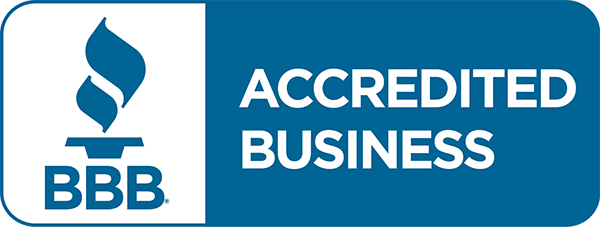The Natural Consumer’s Guide to Cholesterol

About 1 in 4 Americans over the age of 45 regularly take cholesterol-lowering medications known as statins. We’ve been told that statins have been clinically demonstrated to reduce the risk of a cardiovascular event by 30-50%. With that level of effectiveness, anyone with a serum cholesterol level significantly over 200 mg/dl may be encouraged by his or her doctor to start taking a statin drug.
Cholesterol-Lowering Drugs: Are They Worth It?
Statins work by disrupting the cholesterol manufacturing process in the liver. We know they work because we consistently see a reduction in serum cholesterol levels in patients who start taking statin drugs. However, simply lowering one’s cholesterol levels doesn’t necessarily improve health or longevity outcomes.
The body NEEDS cholesterol. Of course, there are different kinds of cholesterol — some good,  some not so much. Even beyond the HDL/LDL breakdown appearing on most cholesterol panels, there are big, fluffy LDL particles and small, dense LDL particles. It’s the SMALL, DENSE particles that you need to be worried about. These are the ones that wreak havoc on the arteries and cause damage, leading to plaque buildup and arterial stiffening. The big, fluffy particles actually help clean up the mess caused by the small, dense particles. So it’s not the amount of TOTAL cholesterol that causes problems but rather the breakdown of cholesterol you should actually concern yourself with. The larger the slice of the total cholesterol pie made up of HDL and big, fluffy LDL particles, the better.
some not so much. Even beyond the HDL/LDL breakdown appearing on most cholesterol panels, there are big, fluffy LDL particles and small, dense LDL particles. It’s the SMALL, DENSE particles that you need to be worried about. These are the ones that wreak havoc on the arteries and cause damage, leading to plaque buildup and arterial stiffening. The big, fluffy particles actually help clean up the mess caused by the small, dense particles. So it’s not the amount of TOTAL cholesterol that causes problems but rather the breakdown of cholesterol you should actually concern yourself with. The larger the slice of the total cholesterol pie made up of HDL and big, fluffy LDL particles, the better.
Statin drugs don’t differentiate between particle size. They just shut down the entire cholesterol-making mechanism. This can be a huge problem! Cholesterol is NECESSARY for the production of all hormones and cell membranes. This is why statins can interfere with sex drive or lead to sexual dysfunction. On top of that, your brain is essentially made of cholesterol. By significantly lowering the amount of TOTAL cholesterol in the body, you may be doing more harm than good.
Statins also interfere with the function of mitochondria, the energy factory in each of our cells. People who take statin drugs have a much more difficult time making ATP (energy  currency) than the rest of us. What this means is that major side effects of statins include muscle weakness, general lethargy, and a reduction in the benefits of exercise. That’s right — people taking statins can exercise more often and with greater intensity than others, yet experience fewer benefits like weight loss, increase in muscle mass, and alleviation of depression.
currency) than the rest of us. What this means is that major side effects of statins include muscle weakness, general lethargy, and a reduction in the benefits of exercise. That’s right — people taking statins can exercise more often and with greater intensity than others, yet experience fewer benefits like weight loss, increase in muscle mass, and alleviation of depression.
The cholesterol-lowering mechanism of statin drugs also prevents the body from producing CoQ10, or Ubiquinol, a major antioxidant manufactured by the body. You can think of antioxidants as “anti-cancer” molecules. The more antioxidants you make or consume, the lower your risk of developing any form of cancer. It’s generally not a good idea to prevent your body from making this stuff, yet statin drugs do just that. CoQ10 is also involved in the energy-producing process, further influencing the energy levels of anyone who takes statins.
We know that statins do lower serum cholesterol levels. We also know that statins lower the risk of cardiovascular-related death. However, these two effects are not necessarily related. Heart disease and the accumulation of small, dense LDL cholesterol are caused by inflammation — NOT dietary cholesterol. Inflammation is the root of all disease, and heart disease is certainly no exception. It turns out that statin drugs do exhibit mild anti-inflammatory properties. While this is certainly a benefit, it probably doesn’t outweigh the many negative side effects of the drug.
It’s important to keep in mind that the risk-reducing benefits of statin drugs are often grossly overstated. While the drug companies have stated a 30-50% reduction in risk, this is a RELATIVE risk reduction, not an absolute risk reduction. This means that in clinical trials, groups taking the drug had 30-50% fewer incidents than groups taking placebo — but it doesn’t tell us anything about the percentage of participants overall who suffered from a cardiovascular incident. It also doesn’t tell us anything about the design of the study or studies. How many participants were there? Were the two groups equal in their overall cardiovascular risk prior to the study? We don’t know. In later clinical trials, it was found that for every 100 people taking statins, only 2 heart attacks were prevented. It also takes about 890 people taking statin drugs to prevent 1 cardiovascular-related death. Taking statins has also been linked to an increased risk of developing type 2 diabetes due to a connection with insulin production and response. For most people, the benefits of statins probably don’t outweigh the harm.
The Dietary Cholesterol Myth

We now know that dietary cholesterol does not affect serum cholesterol to the extent that we used to believe. According to the 2015 U.S. Dietary Guidelines Advisory Committee, dietary cholesterol is “not a nutrient of concern”. The same committee also removed all recommendations to consume a low-fat diet from the 2015 guidelines. It’s not whether or not you eat fat that affects your heart health, but what kind of fat you eat. Monounsaturated fats (omega-3 fats) found in wild-caught fish, avocado, nuts and seeds, coconut oil and olive oil are cardioprotective. These fats help reduce your risk of heart disease. When it comes to animal products in general, food quality makes a HUGE difference. You want to eat foods with high levels of omega-3 fatty acids (anti-inflammatory) and low levels of omega-6 fatty acids (pro-inflammatory). Meats, eggs, and dairy have a wide range of omega-3 to omega-6 ratios. As a general rule of thumb, the healthier the animal, the better the omega-3 to omega-6 ratio. Pasture raised, grass fed, free range, and organic agricultural practices all result in healthier animals, which means healthier meats, eggs, and dairy products with more advantageous omega-3 to omega-6 ratios.
Many people who are told that they have high cholesterol start avoiding foods like red meat and eggs and butter, but this practice isn’t really necessary as long as you are consuming high-quality meat and eggs and butter. What you DO want to avoid is OXIDIZED cholesterol in  any form. Oxidized cholesterol is formed when animal products are exposed to the air for a prolonged period of time during the manufacturing process such as with ground beef, powdered eggs, grated cheeses, and powdered milk or else are cooked on high heat. Many processed foods such as baking mixes, boxed macaroni and cheese, hot cocoa mix, and processed breads contain powdered egg and dairy products — and you probably don’t even realize it.
any form. Oxidized cholesterol is formed when animal products are exposed to the air for a prolonged period of time during the manufacturing process such as with ground beef, powdered eggs, grated cheeses, and powdered milk or else are cooked on high heat. Many processed foods such as baking mixes, boxed macaroni and cheese, hot cocoa mix, and processed breads contain powdered egg and dairy products — and you probably don’t even realize it.
If you are concerned about high cholesterol or unfavorable cholesterol ratios, do your best to stick to an anti-inflammatory diet. This means lots of fruits and vegetables, nuts and seeds, extra virgin olive oil, coconut oil, high-quality animal products including wild-caught fish, all while significantly reducing (or completely eliminating) your intake of refined grains, refined oils, and refined sugars. Refined foods are pro-inflammatory and will stimulate your liver to produce the small, dense LDL particles that cause heart disease. Avoiding trans fats, high fructose corn syrup, and other food additives is also necessary to improve your cholesterol profile, as these foods clog up your liver and prevent it from carrying out its necessary functions. These foods also lead to increased insulin resistance, a contributing cause of heart disease.
A Better Cholesterol Test
If you want to get a sense of your real cardiovascular risk, ask your doctor for an expanded  cholesterol test. There are several tests that measure particle size, rather than just your HDL and LDL breakdown. These include an expanded test from Berkeley HeartLab, the VAP test made by Atherotech, and the NMR Lipoprofile made by LipoScience. Any of these tests can help you determine where you really stand when it comes to heart health and cardiovascular risk. For most people, keeping to a heart-healthy diet such as the one mentioned above and a regular exercise program should eliminate the need to decide whether or not to start taking statin drugs.
cholesterol test. There are several tests that measure particle size, rather than just your HDL and LDL breakdown. These include an expanded test from Berkeley HeartLab, the VAP test made by Atherotech, and the NMR Lipoprofile made by LipoScience. Any of these tests can help you determine where you really stand when it comes to heart health and cardiovascular risk. For most people, keeping to a heart-healthy diet such as the one mentioned above and a regular exercise program should eliminate the need to decide whether or not to start taking statin drugs.
References
Gaby, Alan R. Nutritional Medicine. Fritz Perlberg Publishing. Concord, NH. 2011. pp 275-288.
DrHyman.com
NCBI.com
consumer.healthday.com
http://www.theplc.net/5tests.htm
articles.mercola.com
articles.mercola.com


